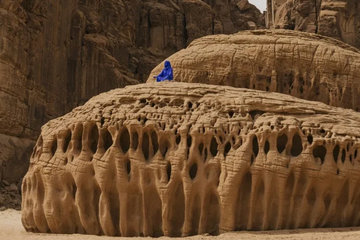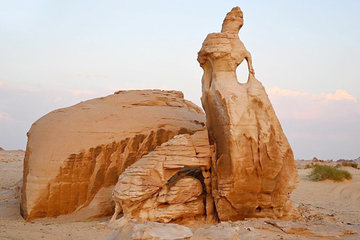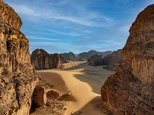
Vatnajökull Glacier Cave, Iceland - image via National Geographic
These stunning caves aren’t make-believe, they can be found in some of the world’s most remote places. While some of them are only reserved for the truly adventurous, we are lucky to get a feel with these spectacular images. Other than the massive stalactites and stalagmites, these incredible caves have something even more special to offer to anyone who dares to explore their depths.
1- Cueva de los Cristales, Mexico
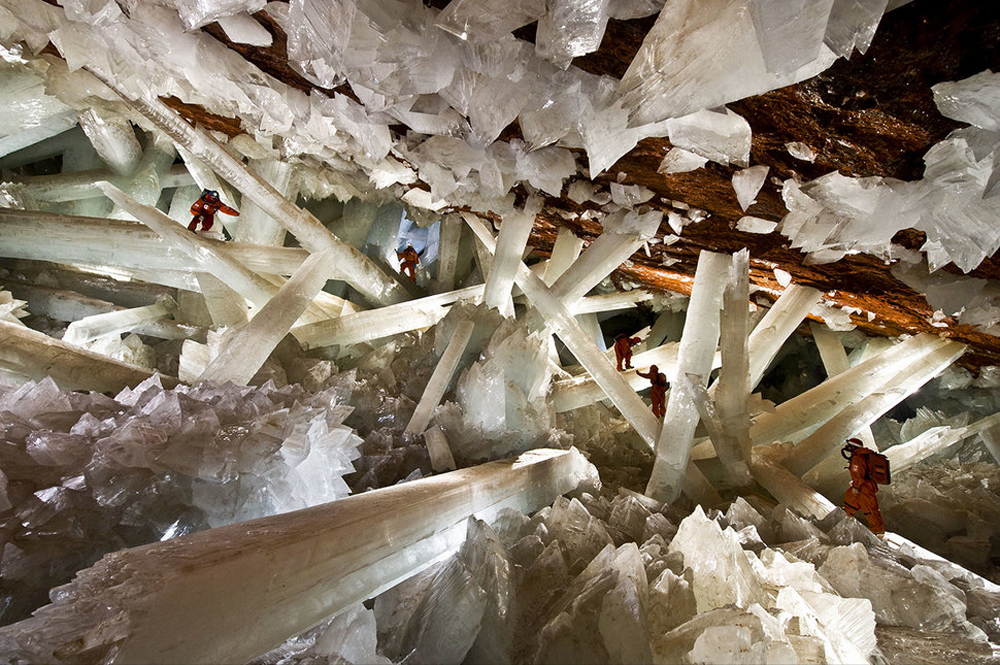
Cueva de los Cristales - image via naica.com.mx
Two brothers who were drilling below the Naica mine near Chihuahua discovered the Cave of the Crystals in 2000. It’s a glittering spectacle, but it is extremely hot and humid with air temperatures reaching up to 58 °C. That makes it hard to explore its many crystals, which are estimated to be about 600,000 years old. The main chamber contains giant selenite crystals and the cave's largest crystal found to date is 12 m (39 ft.) in length, 4 m (13 ft.) in diameter and 55 tonnes in weight.
2- Waitomo Glowworm Cave, New Zealand
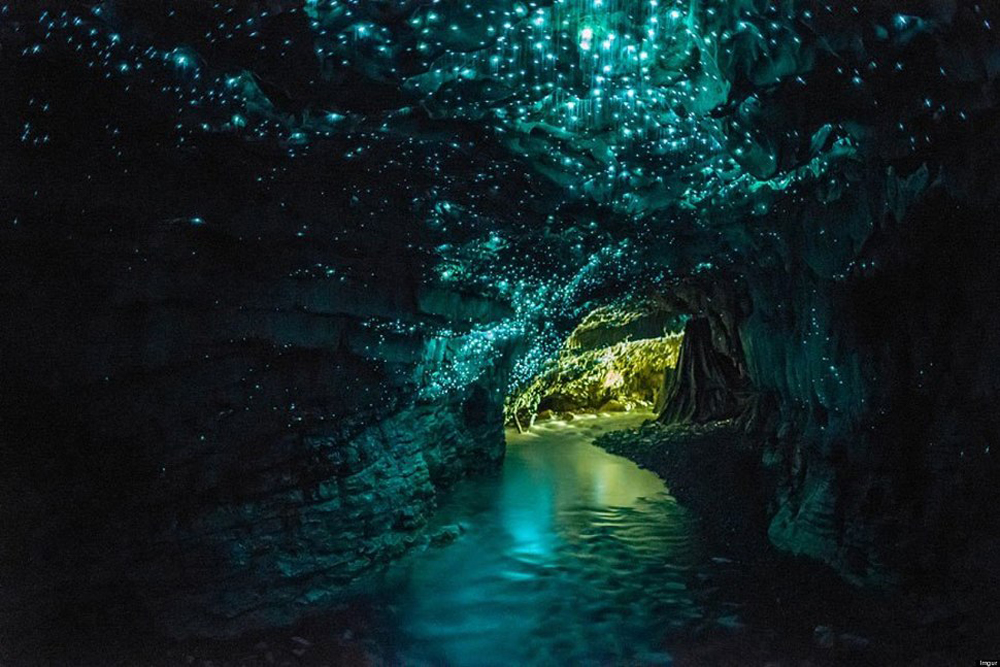
Waitomo Glowworm Cave - image via psu.edu
Formed over 30 million years ago, this cave on New Zealand’s North Island is one of the most brilliant displays of bioluminescence on Earth. Thousands of mosquito-sized glowworms, found exclusively in New Zealand, hang from the walls of the cave from strands of silk and use their dazzling blue light to attract prey. This cave is part of the Waitomo Caves system that includes the Ruakuri Cave and the Aranui Cave.
3- Grotta Azzurra, Italy
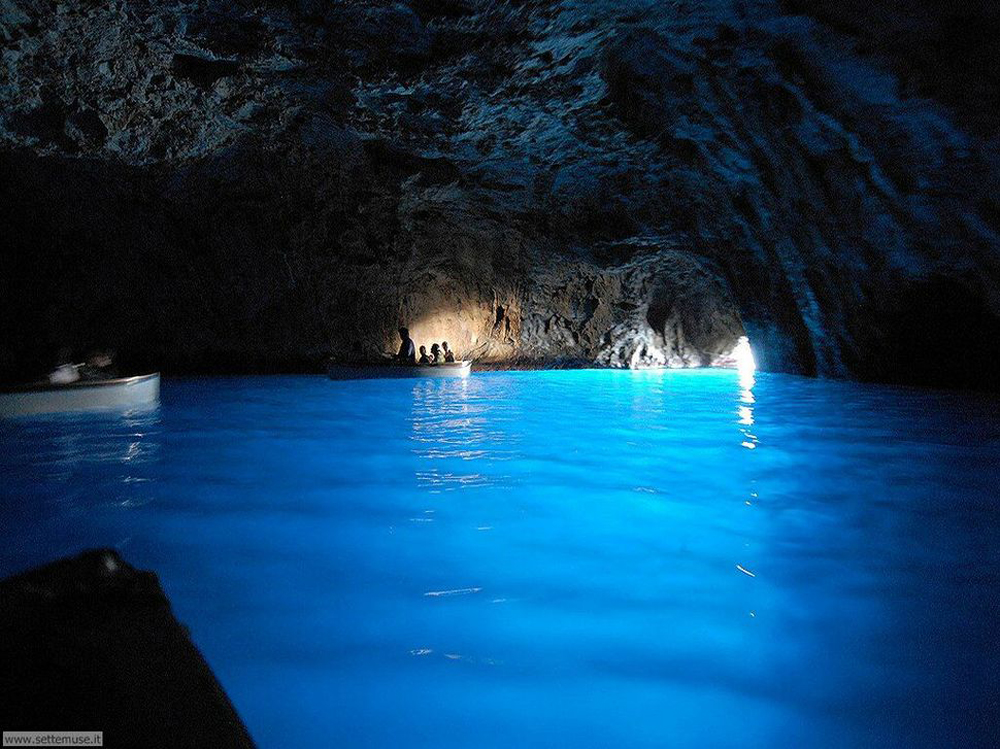
Grotto Azzurra - image via viedelmare.gnv.it
It is believed sirens and devils once inhabited this sea cave on the coast of Capri. The cave, which extends some 50 metres into the cliff at the surface and is about 150 metres deep, is known for its radiant blue water. Sunlight, passing through an underwater cavity and shining through the seawater, creates a blue reflection that illuminates the cavern. The result is an incredible phenomenon that leaves no need for colour enhancements on all the photos you take there.
4- Vatnajökull Glacier Cave, Iceland
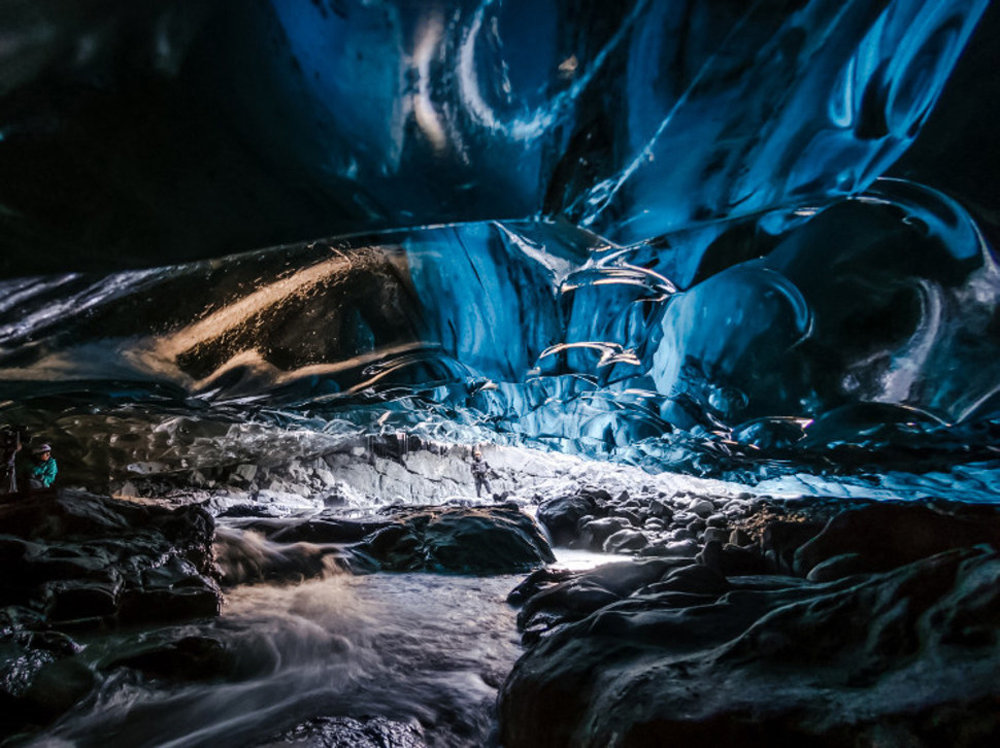
Vatnajökull Glacier Cave - image via extremeiceland.is
The jewel-like interior of this ice cave beckons adventurers on Iceland's Vatnajökull glacier, which was the site of a volcanic eruption in November 1996. Formed entirely out of ice, glacier caves are best to visit in the autumn and winter, when the ice isn’t as likely to collapse and the glaciers don’t move as quickly. Many of them also take on a bright blue colour, which is common in parts of glaciers that have not been turned white by the sun’s UV rays.
5- Marble Caves, Chile
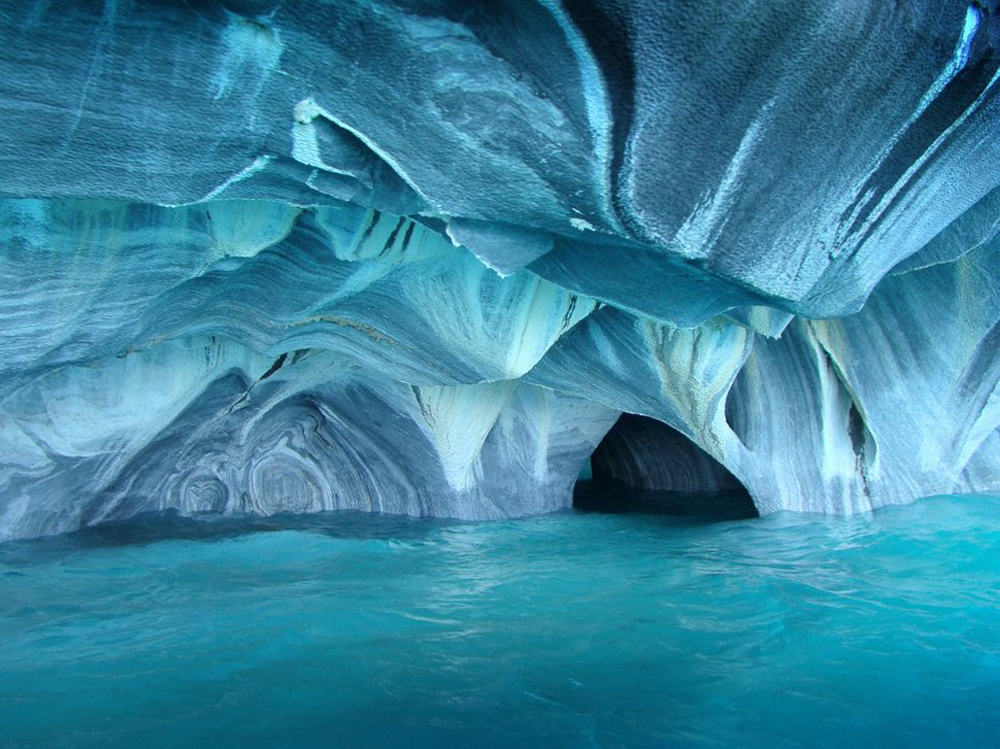
Marble Caves - image via funnydoom.com
If you’re willing to travel to the General Carrera Lake in Patagonia, you’re in for a serious treat. A group of caverns, columns and tunnels formed in monoliths of marble, this unusual geological formation has been formed by wave action over the last 6,200 years. Crystal-clear water tinted a dazzling blue by glacial silt accentuates the intricate designs in what many call the most amazing cave network in the world. The water is also responsible for forming the unique shape of the caverns and walls.
6- Jeita Grotto, Lebanon
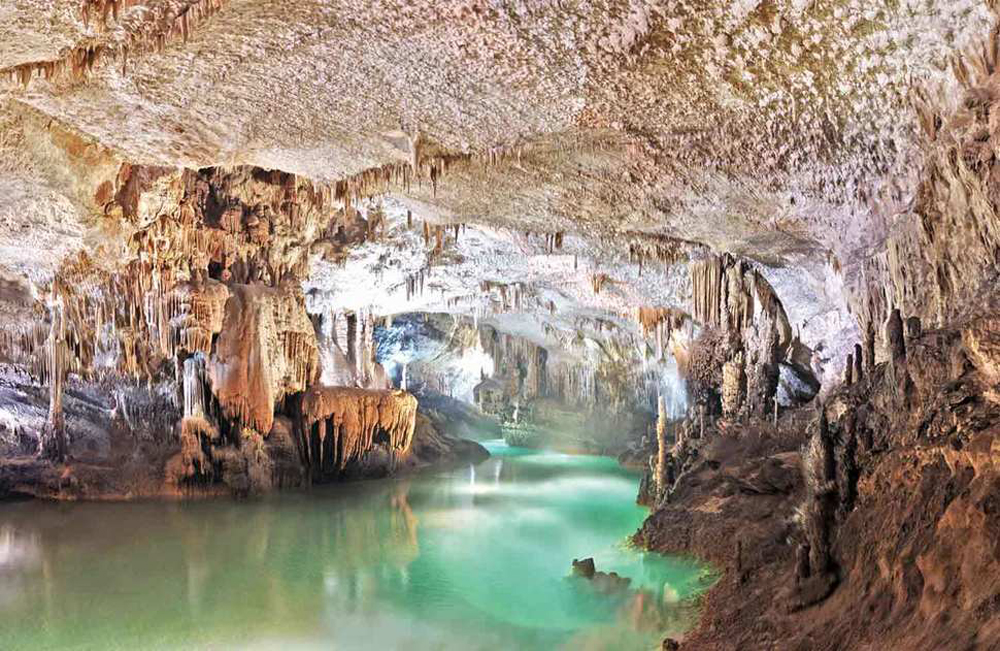
Jeita Grotto - image via mostbeautifulplacesintheworld.org
This system of two separate, but interconnected, karstic limestone caves spanning an overall length of nearly nine kilometres was a finalist in the New 7 Wonders of Nature competition in 2011. The dazzling beauty of the lower cave can only be visited by boat since it channels an underground river. The upper galleries and its natural wonders were discovered in 1958, are composed of a series of chambers and house the world's largest known stalactite.
7- Kyaut Sae Cave, Myanmar
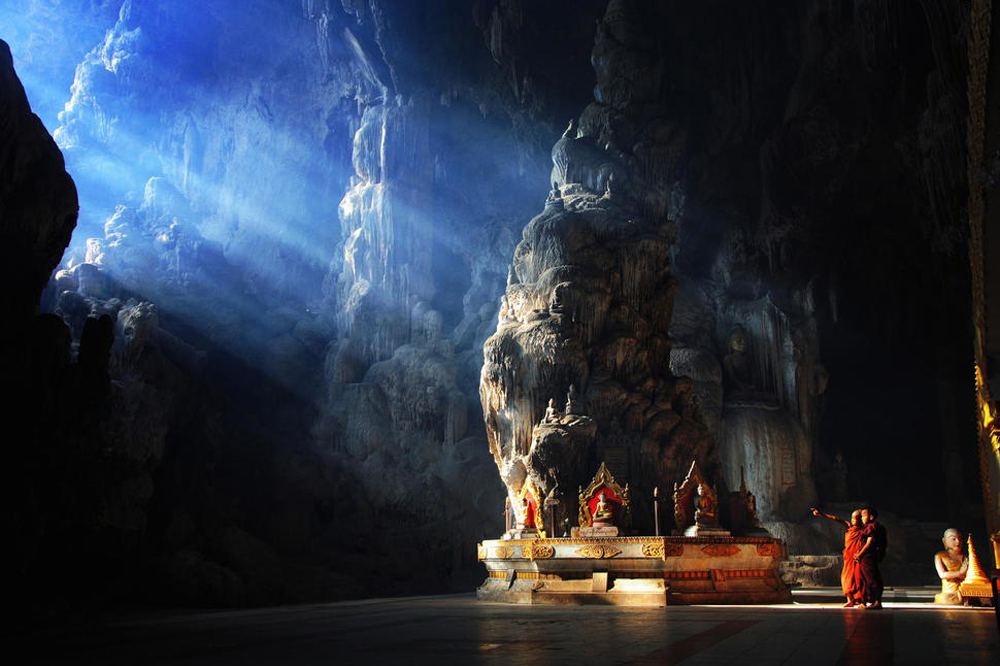
Kyaut Sae Cave - image via 500px.org
According to legend, Kyaut Sae Cave was originally used as a hiding place for locals who wanted to hide from the Mongols in the 13th century. Now the cave has another special purpose. At the entrance there’s a Buddhist temple, built on the side of a cliff, which acts as a meditation area for monks. Tourists are welcome to visit the temple but it’s the kind of incredible place that should be left as undisturbed as possible.

